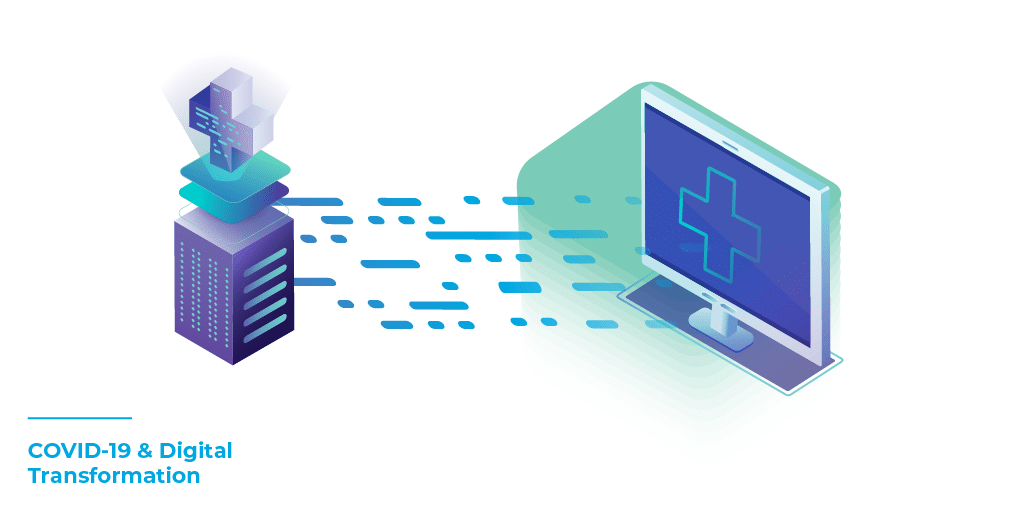Very few, if any, industries have been structured around in-person interactions more than healthcare. Even though digital technologies such as telemedicine and telesurgery have existed for years, they have, to date, had poor penetration into our health systems due to budget constraints and deep-rooted legacy technology. Most healthcare systems, therefore, continue to heavily rely on in-person interactions to perform consultations, checks and diagnostics, and routine health monitoring.
However, the COVID-19 pandemic and requisite social distancing is rapidly forcing established systems to adopt digital technologies to provide remote health options wherever possible, including video appointments, text, email, and purpose-built mobile apps. The breadth, scale, and challenges of the healthcare industry’s transformation are massive.
Healthcare has a lot to catch up with
Even before the pandemic, healthcare IT infrastructures were being strenuously tested. The explosion of big data, rising costs, and an unprecedented number of patients due to aging populations were already pushing IT systems to their limits. While the adoption of remote healthcare delivery was increasing, large-scale overhauls to legacy infrastructure were not a priority for most healthcare organizations. In fact, a 2019 Price Waterhouse Cooper survey revealed that 38% of healthcare CEOs in the United States reported having no digital component in their overall strategic plan.
As in many industries, COVID-19 has forced drastic changes to the status quo, and healthcare organizations are greatly increasing their use of telehealth and remote patient consulting and monitoring while also supporting remote work for employees when possible. But doing so under an outdated IT architecture is not sustainable. Data and the need for ultra-low-latency network connections are only going to keep growing, and the cost savings and convenience of remote healthcare means demand for these services will likely remain long after the pandemic subsides. When COVID-19 subsides, digital transformation in healthcare will continue.
Colocation is the healthiest option
Successful digital transformation in healthcare doesn’t only require the right technology. It requires the bandwidth and processing power to handle unprecedented amounts of data, and the speed and connectivity to deliver crucial services digitally without delay or disruption. In other words, traditional data centers and our current internet infrastructure simply won’t be enough.
According to Urte Jakimaviciute, Senior Director of Market Research at GlobalData:
“Telemedicine and virtual care may prompt the greater uptake of technologies such as wearables and digital therapeutics. However, any data sets obtained from these technologies require adequate processing and secure storage solutions. Therefore, investing in a digitally trained workforce and technologies such as cybersecurity, cloud computing, blockchain, big data, and artificial intelligence (AI) becomes a must. The ability to invest and align infrastructure and resources will play a pivotal role in facilitating the speed and extent of digital transformation in the healthcare landscape.”
In traditional data centers, data processing is centralized and done in a single place, and networks connect to end users via the cloud. However, the amount of data generated by shifting huge numbers of patients to telehealth and remote services and the bandwidth necessary to sustain it are more than the traditional cloud can handle. That amount of data traveling through the cloud to a data center and then back to endpoint devices will be slow and prone to disruption. When you’re playing a video game or watching Netflix online, latency can be annoying. In telemedicine, however, it is intolerable.
Colocation data center providers such as Netrality own properties that serve as points of presence (POP) for healthcare organizations to connect directly to an entire ecosystem of network and cloud providers, bypassing the public internet. By processing data at the edge – the periphery of the network closest to users – the amount of data flowing to and from core networks is significantly reduced. This gives healthcare providers much greater bandwidth and capacity, ultra-low latency, reduced transport costs, and increased data security.
Colocation data centers also ensure healthcare organizations can abide by the rigorous governance, risk and compliance (GRC) standards they are subject to. Patient’s protected health information (PPI) must be encrypted with Advanced Encryption Standard (AES) to prevent unauthorized access. Secure firewalls, remote VPN access, and robust access control must be implemented so that only those with proper credentials can access the network remotely. Housing patient records on a dedicated IP address that is separated from the public internet and having a disaster recovery plan is also mandatory.
Connecting at the edge and leveraging the ultra-low latency and exponentially greater processing power that colocation provides is no longer a “nice-to-have” for healthcare providers. It is crucial for delivering health services in a new remote and digital reality. Netrality’s urban-situated colocation facilities in Chicago, Houston, Kansas City, Philadelphia and St. Louis ensure that the mission-critical applications healthcare providers rely on are up and running 24/7/365, in an environment built for compliance with HIPAA, HITECH and other regulations. Contact us for more information.


